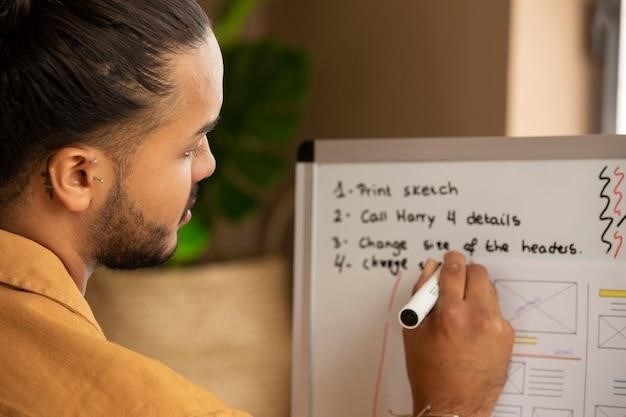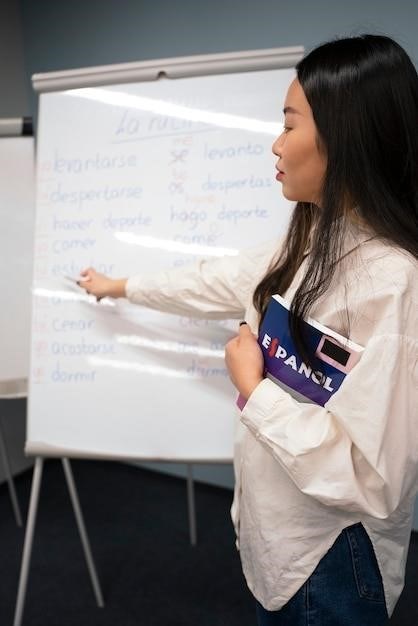Interactive Tutorial⁚ Forming Questions in Spanish
Welcome to this interactive tutorial on forming questions in Spanish! This comprehensive guide will equip you with the essential knowledge and tools to confidently ask questions in Spanish, whether you are a beginner or looking to refine your skills. Get ready to engage with interactive exercises, practice examples, and discover the nuances of Spanish question formation.
Introduction⁚ The Importance of Questions
In any language, questions are the key to unlocking understanding and engaging in meaningful conversations. They allow us to gather information, clarify doubts, and express curiosity. In Spanish, the ability to form questions is fundamental for effective communication, whether you are traveling, studying, or simply connecting with Spanish speakers. This interactive tutorial will explore the various ways to form questions in Spanish, empowering you to navigate conversations with confidence and fluency.
Asking questions is not just about seeking information; it is also a powerful tool for building rapport and fostering genuine connections. By asking thoughtful questions, you demonstrate interest and respect for the other person, deepening the conversation and creating a more meaningful experience. In the realm of language learning, questions serve as stepping stones to acquiring new vocabulary, grammatical structures, and cultural insights. This interactive tutorial will guide you through the intricacies of Spanish question formation, enabling you to confidently engage in conversations and expand your linguistic horizons.
Understanding the Basics of Question Formation
At its core, forming questions in Spanish involves understanding the basic structure of a declarative sentence and then adapting it to create an interrogative sentence. In declarative sentences, the subject typically comes before the verb, while in questions, the order is reversed. This inversion, placing the verb before the subject, is a key element in Spanish question formation.
While inversion is a common strategy, there are other ways to form questions in Spanish. Using interrogative words, such as “¿Qué?” (What?), “¿Quién?” (Who?), “¿Cuándo?” (When?), “¿Dónde?” (Where?), “¿Por qué?” (Why?), and “¿Cómo?” (How?), allows you to ask specific questions that seek specific information. These words are essential for understanding the nuances of Spanish question formation and for expressing a wider range of inquiries.
Finally, intonation plays a crucial role in indicating a question in Spanish. Raising your voice at the end of a sentence signals that you are asking a question. While not always necessary, this intonation can add clarity and emphasize the interrogative nature of your statement. Understanding these basic principles of question formation will form the foundation for confidently constructing questions in Spanish.
Inversion⁚ Placing the Verb First
Inversion, the process of placing the verb before the subject, is a fundamental technique for forming questions in Spanish. This simple yet effective strategy transforms a declarative statement into an interrogative sentence. Consider the example⁚ “Ella estudia español” (She studies Spanish). To turn this into a question, we invert the subject and verb⁚ “¿Estudia ella español?” (Does she study Spanish?). This simple inversion effectively transforms the statement into a question.
However, the inversion method is not limited to basic subject-verb combinations. It can be applied to more complex sentences as well. For instance, in the sentence “El profesor explica la lección” (The teacher explains the lesson), we can invert the verb and subject to create the question “¿Explica el profesor la lección?” (Does the teacher explain the lesson?). This demonstrates that inversion works seamlessly across various sentence structures.
While inversion might seem simple at first, it’s crucial to pay attention to the verb conjugation. The verb form must agree with the subject in both person and number, even when inverted. This ensures grammatical accuracy and clarity in your questions. Mastering inversion will significantly enhance your ability to ask questions in Spanish, enabling you to express a wide range of inquiries with confidence.
Question Words⁚ Asking for Specific Information
While inversion helps us form basic questions, question words are essential for seeking specific information. These words, known as interrogative words, act as signposts, guiding the listener towards the type of information you desire. These words, like “qué” (what), “quién” (who), “cuándo” (when), “dónde” (where), “por qué” (why), and “cómo” (how), are the building blocks for asking targeted questions.
For instance, if you want to know what someone is doing, you would use “qué”⁚ “¿Qué estás haciendo?” (What are you doing?). Similarly, “quién” is used to inquire about a person⁚ “¿Quién es ese hombre?” (Who is that man?). By strategically using these words, you can delve deeper into a topic and gather specific information.
The placement of question words is crucial. They typically occupy the initial position within the question, followed by the inverted verb and the rest of the sentence. For example, in the sentence “Estoy leyendo un libro” (I am reading a book), asking “What are you reading?” would become “¿Qué estás leyendo?” (What are you reading?). Understanding the proper placement of question words is key to constructing grammatically correct and meaningful questions.
Using Interrogative Words⁚ ¿Qué?, ¿Quién?, ¿Cuándo?, etc.
Interrogative words, or question words, are the foundation for asking specific questions in Spanish. They function as signposts, guiding the listener towards the type of information you seek. These words are essential for asking questions that go beyond simple yes or no responses.
Let’s explore some key interrogative words and how they are used⁚
- ¿Qué? (What?)⁚ Used to ask about a thing or an action. Example⁚ “¿Qué estás haciendo?” (What are you doing?)
- ¿Quién? (Who?)⁚ Used to ask about a person. Example⁚ “¿Quién es ese hombre?” (Who is that man?)
- ¿Cuándo? (When?)⁚ Used to ask about a time. Example⁚ “¿Cuándo llegaste?” (When did you arrive?)
- ¿Dónde? (Where?)⁚ Used to ask about a place. Example⁚ “¿Dónde está el baño?” (Where is the bathroom?)
- ¿Por qué? (Why?)⁚ Used to ask for a reason. Example⁚ “¿Por qué no viniste?” (Why didn’t you come?)
- ¿Cómo? (How?)⁚ Used to ask about the manner or way something is done. Example⁚ “¿Cómo llegaste aquí?” (How did you get here?)
By mastering these interrogative words, you can ask a wide range of questions in Spanish. Remember, they usually come at the beginning of a question, followed by the inverted verb and the rest of the sentence.
Practice Exercises⁚ Testing Your Knowledge
Now it’s time to put your newfound knowledge to the test! These practice exercises will help you solidify your understanding of question formation in Spanish. Each exercise will present a scenario or a statement, and your task is to transform it into a question.
Here are some examples to get you started⁚
- Scenario⁚ You see a friend reading a book.
Question⁚ ¿Qué libro estás leyendo? (What book are you reading?) - Statement⁚ The class ends at two o’clock.
Question⁚ ¿A qué hora termina la clase? (What time does class end?) - Scenario⁚ You are at a restaurant and want to know what the daily special is.
Question⁚ ¿Cuál es el plato del día? (What is the daily special?)

Remember to use the correct interrogative words, invert the verb, and pay attention to the word order. Feel free to use the interactive elements provided to check your answers and receive feedback.
Don’t be afraid to make mistakes – learning a new language involves practice and experimentation. With each exercise, you’ll become more confident in forming questions in Spanish!
Interactive Components⁚ Engaging with the Material
This interactive tutorial is designed to make learning fun and engaging! You’ll encounter various interactive elements throughout the course, designed to enhance your understanding and reinforce your learning. These components include⁚
- Drag-and-Drop Exercises⁚ Test your knowledge of question formation by dragging the correct words or phrases into their appropriate positions to create a complete question.
- Multiple-Choice Quizzes⁚ Choose the best answer from a selection of options to demonstrate your understanding of the concepts covered.
- Interactive Flashcards⁚ Review key vocabulary and grammatical rules with interactive flashcards that allow you to test yourself and see the correct answer.
- Audio Recordings⁚ Listen to native Spanish speakers pronounce questions to improve your pronunciation and listening comprehension.
- Real-World Scenarios⁚ Apply your knowledge to realistic situations like ordering food in a restaurant, asking for directions, or making small talk with a friend.
These interactive elements will provide you with immediate feedback and help you identify any areas that require further practice. Don’t hesitate to engage with these features – they are an essential part of mastering the art of asking questions in Spanish!
Mastering the Art of Questioning
Congratulations! You have successfully navigated this interactive tutorial on forming questions in Spanish. You have learned the fundamental rules of question formation, explored various question types, and practiced your skills through engaging exercises. Remember, asking questions is a crucial aspect of communication and understanding in any language. The ability to ask questions confidently will not only enhance your Spanish skills but also open doors to deeper conversations and a richer cultural experience.
As you continue your Spanish learning journey, keep practicing asking questions in a variety of contexts. Don’t be afraid to make mistakes – they are an essential part of the learning process. Utilize the resources provided in the Further Resources section to expand your knowledge and explore additional aspects of Spanish grammar.
By consistently applying your newfound knowledge and engaging in meaningful conversations, you will undoubtedly master the art of questioning in Spanish, making your language learning experience even more rewarding and enjoyable. ¡Buen trabajo!
Further Resources⁚ Expanding Your Skills
Your journey of mastering Spanish question formation doesn’t end here. To further enhance your skills and delve deeper into the intricacies of Spanish grammar, here are some valuable resources that can supplement your learning⁚
- Online Language Learning Platforms⁚ Websites and apps like Duolingo, Babbel, and Rosetta Stone offer interactive courses and exercises specifically designed to improve your Spanish grammar and communication skills. These platforms often include sections dedicated to question formation, providing additional practice and feedback.
- Spanish Grammar Textbooks and Workbooks⁚ For a more structured approach, consider exploring Spanish grammar textbooks and workbooks. These resources provide comprehensive explanations of grammatical concepts, including question formation, along with numerous exercises and practice opportunities.
- Spanish Language Exchange Communities⁚ Connect with native Spanish speakers online or in person through language exchange communities. These platforms allow you to practice your speaking and listening skills in a supportive environment, where you can ask questions and receive feedback on your question formation.
- Spanish Language Podcasts and Videos⁚ Immerse yourself in the Spanish language by listening to podcasts or watching videos in Spanish. Pay attention to how native speakers ask questions in different contexts, and try to mimic their pronunciation and sentence structure.
By actively engaging with these resources, you will continue to build upon your foundation of Spanish question formation, expanding your knowledge and confidence in using this essential grammatical skill.
Additional Tips and Tricks

Here are some additional tips and tricks that can further enhance your ability to form questions in Spanish, making your communication more natural and fluent⁚
- Pay attention to intonation⁚ In Spanish, the intonation of a sentence often indicates whether it is a statement or a question. For instance, a rising intonation at the end of a sentence typically signals a question. Practice listening to native speakers to develop your ear for this subtle but important distinction.
- Use question words strategically⁚ Don’t limit yourself to the basic question words like “qué” (what), “quién” (who), and “dónde” (where). Explore the full range of question words to ask more specific and nuanced questions. For example, “cuándo” (when), “cómo” (how), and “por qué” (why) can provide valuable insights.
- Practice with real-life scenarios⁚ Don’t just focus on textbook examples. Think about common situations where you might ask questions in Spanish, such as ordering food at a restaurant, asking for directions, or inquiring about someone’s well-being. This practical approach will help you apply your knowledge in a more meaningful way.
- Record yourself speaking⁚ Record yourself asking questions in Spanish and then listen back to your pronunciation and sentence structure. Identify areas for improvement and work on refining your skills. This self-assessment can be a valuable tool for identifying and addressing any challenges.
Remember, practice is key. The more you engage with the Spanish language, the more confident you will become in forming questions and expressing yourself effectively.



